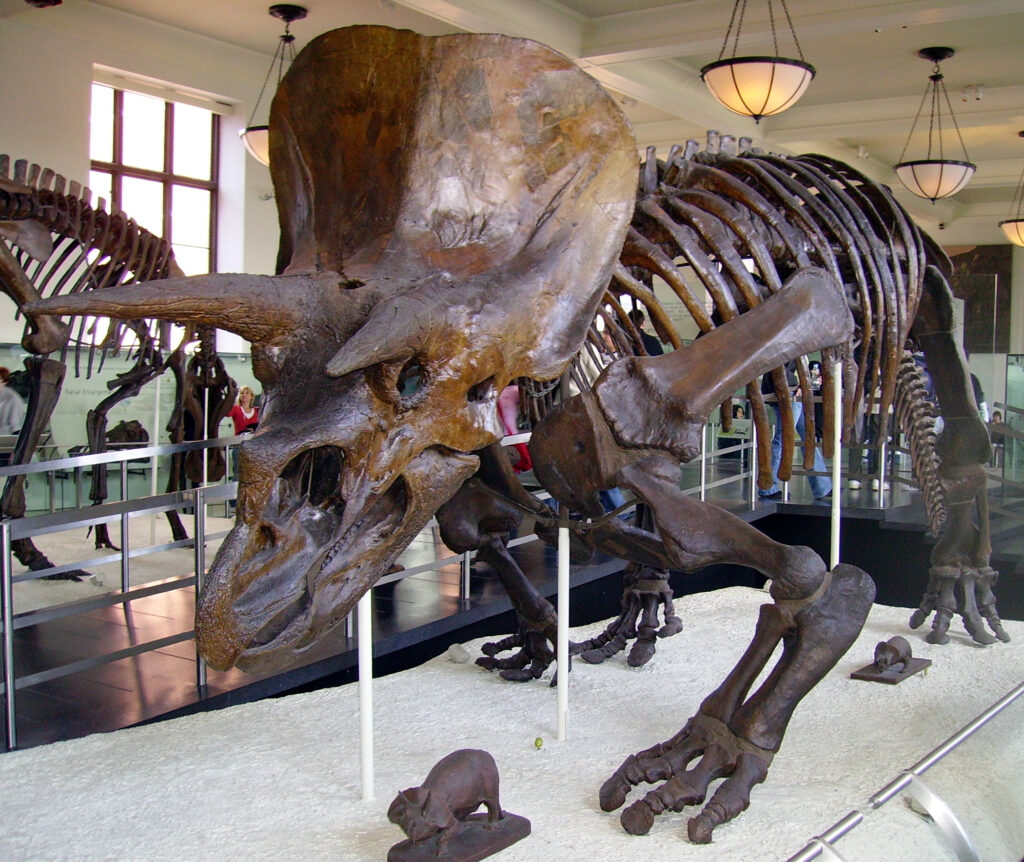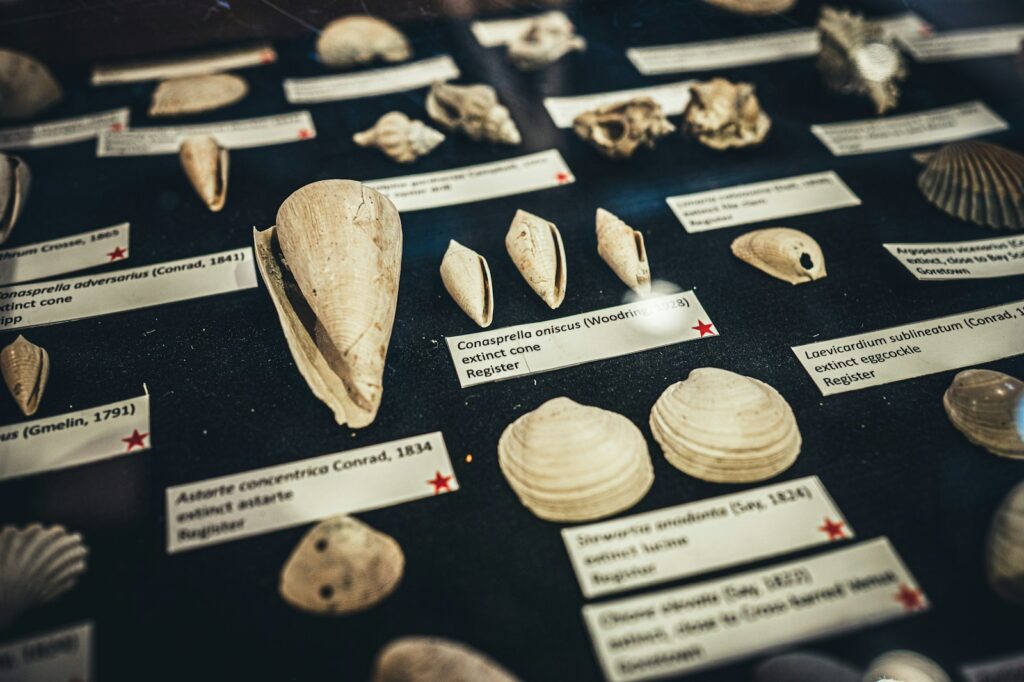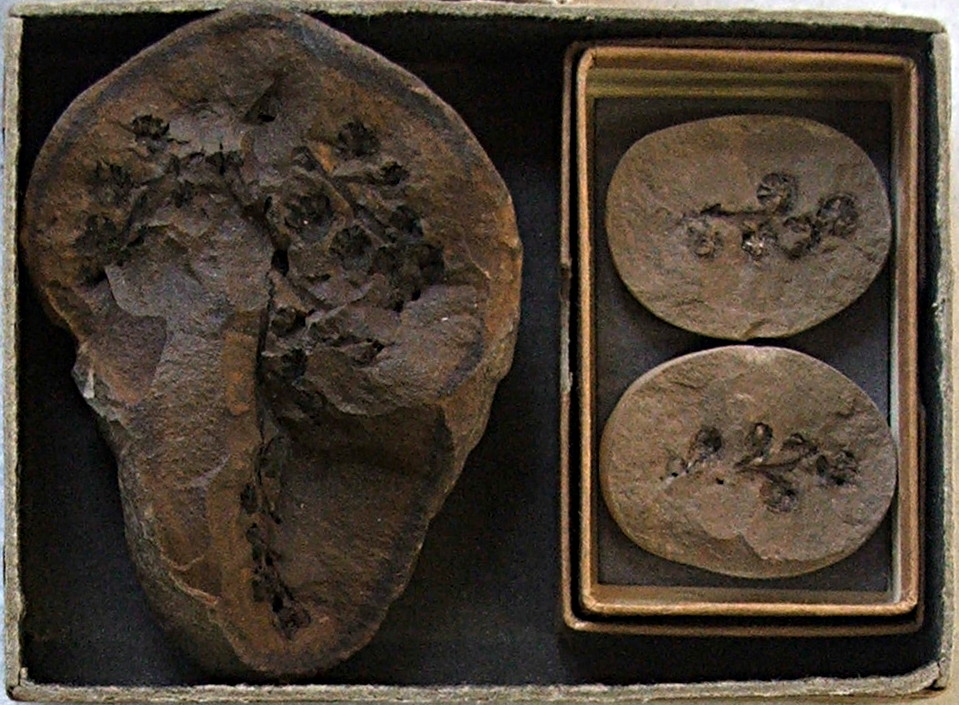Picture walking along what appears to be ordinary dry land, only to discover you’re actually treading on the ancient ocean floor. Beneath your feet lie countless stories frozen in stone—creatures that swam in seas millions of years ago, now perfectly preserved as fossils. When oceans retreat, they leave behind one of nature’s most incredible museums, where prehistoric life tells tales of worlds we can barely imagine.
The Great Unveiling: How Ocean Retreat Exposes Ancient Worlds
When sea levels drop dramatically, something magical happens to our planet’s hidden history. The ocean floor, which has been a protective vault for millions of years, suddenly becomes accessible to scientists and fossil hunters alike. This process doesn’t happen overnight—it’s the result of massive geological shifts, ice ages, or tectonic movements that can drain entire shallow seas. Think of it like removing a giant blanket that’s been covering Earth’s most precious treasures for eons. The exposed seabed reveals layer upon layer of sedimentary rock, each one containing snapshots of life from different prehistoric periods. These newly exposed areas often become fossil goldmines, offering researchers unprecedented access to specimens that were previously impossible to reach.
Marine Giants of the Deep: Massive Sea Creatures Turned to Stone
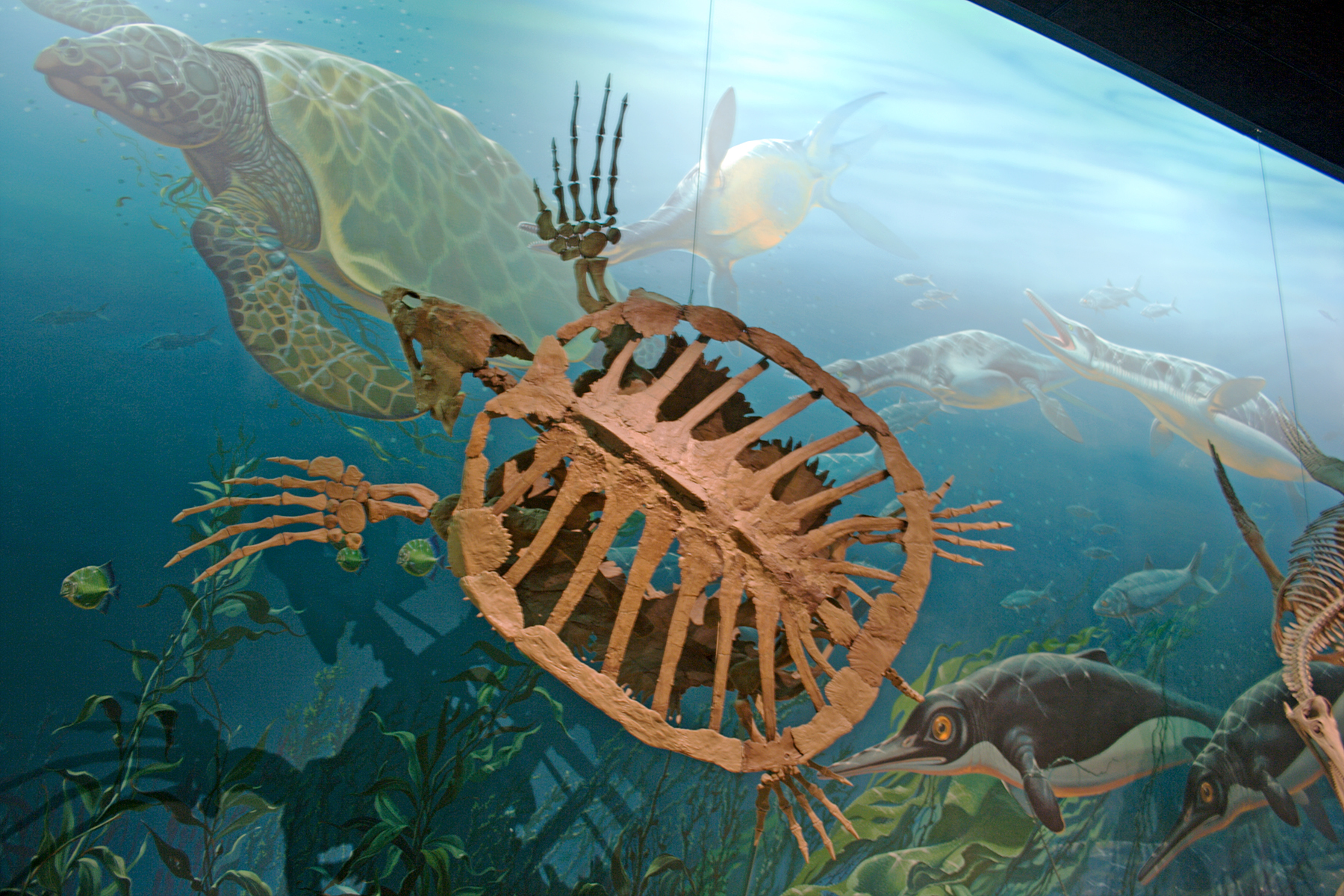
The fossils of ancient marine giants are perhaps the most breathtaking discoveries in retreated ocean beds. Imagine stumbling upon the fossilized remains of a Megalodon, the prehistoric shark that could grow up to 60 feet long—larger than a school bus. These apex predators ruled ancient seas, and their massive teeth, sometimes as big as your hand, are commonly found in exposed ocean floors. Plesiosaurs, the long-necked marine reptiles that inspired modern sea monster legends, also left their mark in these ancient seabeds. Their fossils reveal creatures that combined the grace of a swan with the power of a crocodile, some reaching lengths of over 40 feet. Even more spectacular are the ichthyosaur fossils—dolphin-like reptiles with enormous eyes designed for hunting in the dark depths of prehistoric oceans.
Trilobite Treasures: The Ocean’s Ancient Arthropods

Long before dinosaurs walked the Earth, trilobites dominated the ocean floors for nearly 300 million years. These fascinating creatures, resembling a cross between a horseshoe crab and an alien spacecraft, are among the most commonly found fossils in retreated ocean areas. Their hard exoskeletons preserved beautifully, creating detailed fossils that show everything from their compound eyes to their intricate leg structures. Some trilobites were tiny, no bigger than a pill bug, while others grew to the size of serving platters. What makes trilobite fossils particularly special is their incredible diversity—over 20,000 species have been identified, each adapted to different ocean environments and lifestyles. Finding a perfectly preserved trilobite fossil is like discovering a time capsule that reveals the sophisticated design of these ancient ocean dwellers.
Coral Kingdoms: Reef Systems Frozen in Time
Ancient coral reefs preserved in retreated ocean beds offer us windows into tropical underwater paradises that existed millions of years before humans appeared. These fossilized reef systems are incredibly complex, showing not just the corals themselves, but entire ecosystems trapped in stone. The variety of coral species found in these fossil reefs often exceeds what we see in modern oceans, revealing a time when marine biodiversity was even more spectacular than today. Rugose corals, also known as horn corals, created massive reef structures that provided homes for countless other sea creatures. Many of these ancient reefs show evidence of the daily rhythms of prehistoric oceans, with growth patterns that help scientists understand ancient tidal cycles and seasonal changes. Walking through these fossilized coral gardens feels like exploring an underwater city where time has stood perfectly still.
Microscopic Marvels: Tiny Fossils with Big Stories

Not all fossil treasures are massive—some of the most important discoveries in retreated ocean beds are invisible to the naked eye. Foraminifera, tiny single-celled organisms with beautiful shell-like structures, accumulated in vast numbers on ancient ocean floors. These microscopic fossils are like prehistoric weather stations, providing detailed information about ancient ocean temperatures, chemistry, and climate patterns. Diatoms, microscopic algae with intricate glass-like structures, create stunning patterns when viewed under a microscope and help scientists understand the base of ancient food chains. Radiolarians, another group of microscopic marine organisms, left behind delicate silica skeletons that look like tiny works of art. Though small, these microfossils are incredibly valuable because they’re abundant, widespread, and highly sensitive to environmental changes, making them perfect indicators of ancient ocean conditions.
Shell Shocked: Mollusks and Their Prehistoric Varieties
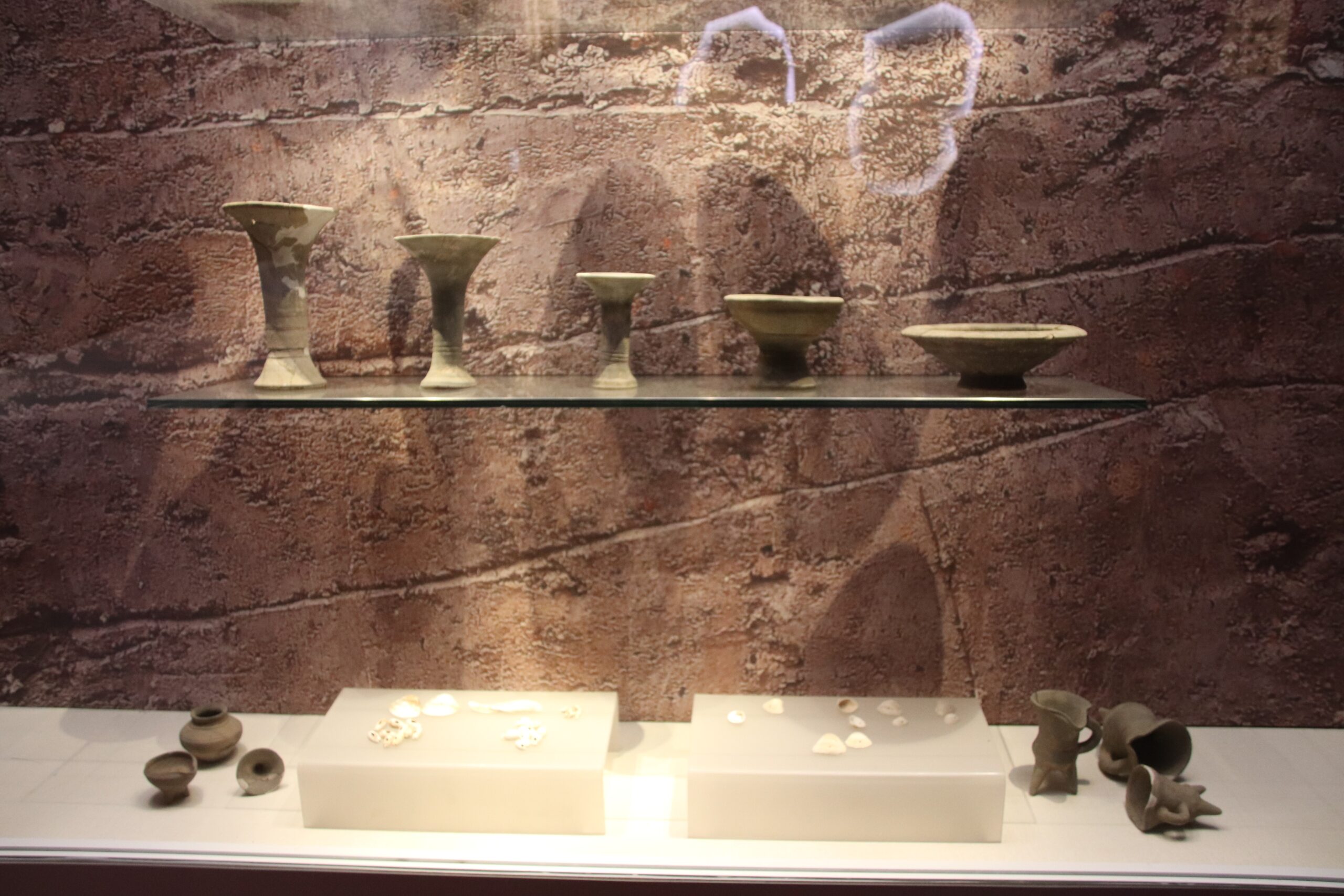
The diversity of ancient mollusks found in retreated ocean beds is absolutely staggering, far exceeding anything we see in modern seas. Ammonites, the spiral-shelled relatives of modern squid and octopus, are among the most prized fossil finds, with some specimens reaching diameters of over six feet. These prehistoric cephalopods were sophisticated hunters with complex shell chambers that controlled their buoyancy, allowing them to move up and down in the water column with precision. Brachiopods, which look similar to modern clams but are actually quite different, dominated ancient seafloors and their fossils reveal intricate feeding and breathing structures. Gastropods—ancient snails and slugs—show incredible evolutionary creativity, with shell shapes and sizes that seem almost impossible by today’s standards. The preservation quality of these mollusk fossils is often exceptional, with some retaining their original shell colors and patterns even after millions of years buried under the sea.
Fish Tales: Vertebrate Fossils from Ancient Seas
When ancient ocean beds become exposed, they often reveal remarkably well-preserved fish fossils that tell the story of vertebrate evolution in the seas. These aren’t just scattered bones—many sites contain complete fish skeletons with every fin ray and scale intact. Placoderms, the armored fish of the Devonian period, show us a time when fish experimented with protective plating instead of relying purely on speed and agility. Some of these ancient fish reached enormous sizes, with Dunkleosteus having a skull over three feet long and jaws powerful enough to bite through almost anything. Early sharks from these fossil beds reveal how different ancient sharks were from modern species, often sporting bizarre fin arrangements and unusual body shapes. The level of detail in these fish fossils sometimes includes soft tissue preservation, showing us internal organs, muscle structure, and even the contents of their last meals.
Crinoid Gardens: The Sea Lilies That Weren’t Plants

One of the most beautiful and abundant fossil types found in retreated ocean areas comes from crinoids—creatures that look like underwater flowers but were actually animals. These “sea lilies” covered vast areas of ancient ocean floors, creating underwater forests that swayed with the currents. Crinoid fossils are incredibly common because their bodies were made up of hundreds of small, disc-like segments that easily separated after death, creating fossil beds filled with tiny star-shaped pieces. However, finding a complete crinoid fossil with its full stem and crown intact is like discovering a perfect underwater sculpture. Some crinoid beds are so extensive that entire quarries are made up almost entirely of their fossilized remains. These creatures were filter feeders, using their feathery arms to catch food particles from the water, and their fossils help us understand how ancient ocean ecosystems functioned at the most basic level.
Trace Fossils: Reading the Behavior of Ancient Ocean Life

Sometimes the most fascinating fossils aren’t the creatures themselves, but the traces they left behind in ancient ocean sediments. Burrows, tracks, and feeding trails preserved in stone tell us how prehistoric sea creatures lived, moved, and interacted with their environment. These trace fossils reveal behaviors that no skeleton could ever show us—like how ancient worms burrowed through seafloor mud or how trilobites moved across the ocean bottom. Some trace fossils show predator-prey interactions frozen in time, such as drill holes made by ancient snails attacking their prey or bite marks left by fish on shells. The variety of trace fossils in retreated ocean beds is enormous, ranging from tiny worm tubes to massive burrow systems created by unknown creatures. What makes these fossils particularly valuable is that they show us the “soft parts” of ancient ecosystems—the daily activities and survival strategies that bones and shells can’t reveal.
Evolutionary Experiments: Bizarre Creatures That Didn’t Make It

Retreated ocean beds often reveal some of the strangest creatures that ever lived—evolutionary experiments that were so unusual they seem almost alien. The Burgess Shale and similar fossil sites have revealed creatures like Opabinia, which had five mushroom-shaped eyes and a vacuum cleaner-like proboscis, or Hallucigenia, which was so bizarre that scientists initially couldn’t figure out which end was the head. These ancient seas were testing grounds for life forms that pushed the boundaries of what we consider possible. Anomalocaris, one of the first large predators, resembled a swimming shrimp the size of a person with grasping arms that could snatch prey from the seafloor. Many of these experimental creatures left no descendants, representing evolutionary dead ends that show us just how creative and unpredictable life can be. Finding fossils of these bizarre animals is like discovering alien life forms that actually lived on our own planet millions of years ago.
Time Capsules in Stone: How Fossils Preserve Soft Tissues
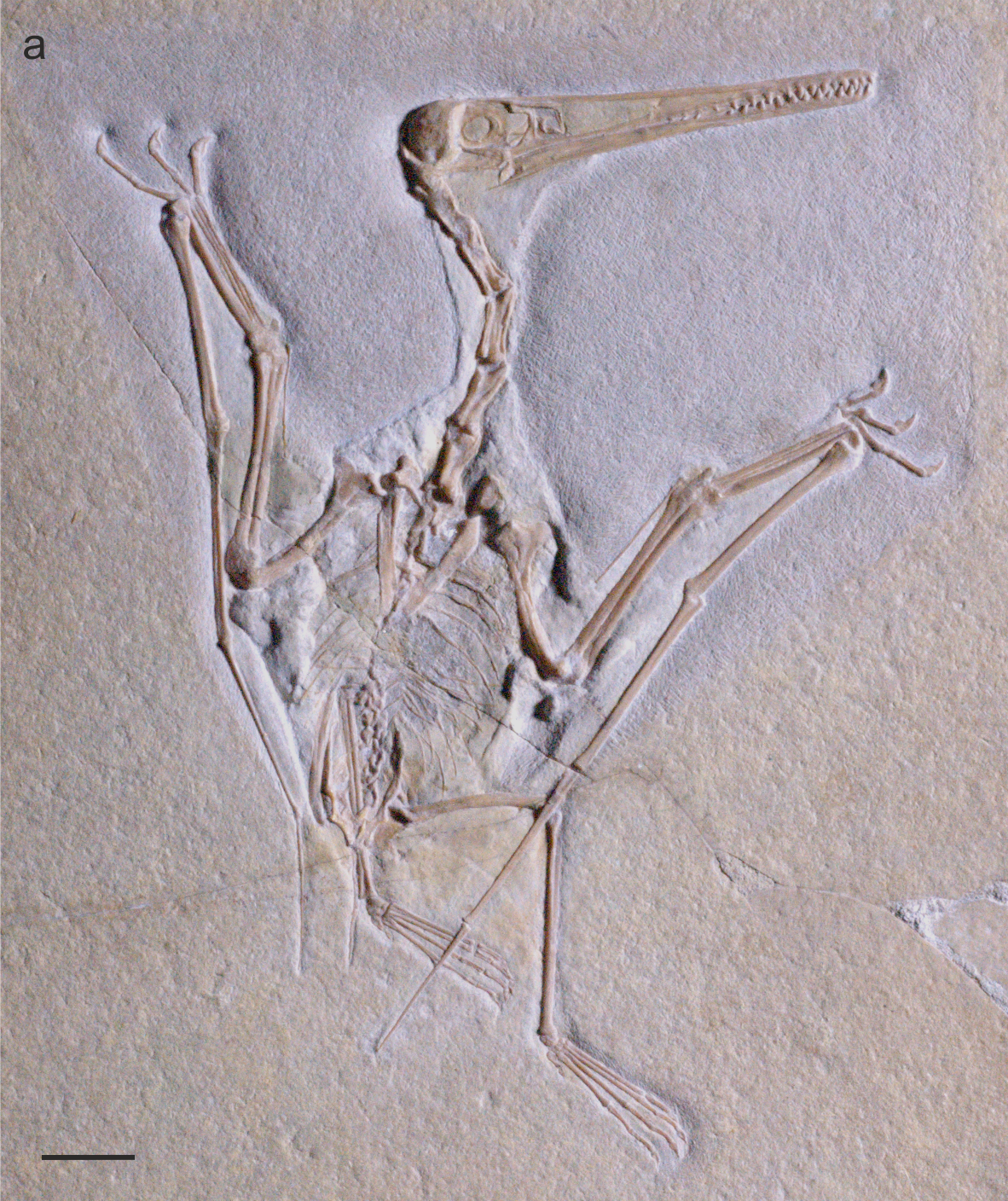
One of the most remarkable aspects of fossils found in retreated ocean beds is their occasional preservation of soft tissues that normally decay rapidly after death. Under perfect conditions, ancient seafloor sediments could bury creatures so quickly and completely that even delicate structures like skin, muscles, and internal organs were preserved. The famous Solnhofen limestone in Germany has yielded fossils with preserved feathers, while other sites have revealed ancient fish with their scales still showing original colors. Some fossils even preserve behavioral evidence, like pterosaur eggs with developing embryos inside or fish fossils showing their last meal still in their stomachs. These exceptional preservation events are rare, but when they occur, they provide incredibly detailed snapshots of ancient life. Scientists can sometimes extract organic compounds from these fossils, giving us chemical signatures of creatures that lived hundreds of millions of years ago.
The Cambrian Explosion: Early Ocean Life’s Creative Burst

Many of the most spectacular fossil discoveries in retreated ocean beds come from the Cambrian period, when life on Earth underwent its most dramatic evolutionary burst. This “Cambrian Explosion” filled the oceans with an incredible diversity of new life forms, many of which seem almost impossible by today’s standards. Creatures developed the first complex eyes, sophisticated appendages, and defensive armor during this period. The variety of body plans that appeared during the Cambrian was actually greater than what we see in modern oceans, with many experimental designs that were later abandoned by evolution. Fossil sites from this period reveal complete ecosystems where predators and prey engaged in an evolutionary arms race that produced increasingly complex and specialized creatures. These ancient ocean communities show us that the history of life is not a simple progression from simple to complex, but rather a series of explosive creative periods followed by refinement and specialization.
Climate Chronicles: What Ocean Fossils Tell Us About Ancient Environments

The fossils found in retreated ocean beds are like ancient thermometers and barometers, recording detailed information about prehistoric climates and ocean conditions. Certain types of corals only grow in specific temperature ranges, so their presence in fossil beds tells us exactly how warm ancient seas were. The chemistry preserved in fossil shells reveals information about ocean acidity, salinity, and oxygen levels that existed millions of years ago. During mass extinction events, the fossil record shows dramatic changes in ocean life that correspond to major climate shifts, helping scientists understand how marine ecosystems respond to environmental stress. Some fossil beds preserve evidence of ancient ocean currents, seasonal changes, and even short-term weather patterns through growth rings and chemical signatures. This paleoclimate data is incredibly valuable for understanding how Earth’s climate system works and how it might respond to current environmental changes.
Modern Treasure Hunters: How Scientists Excavate Ocean Fossil Sites
Excavating fossils from retreated ocean beds requires a unique combination of geological knowledge, paleontological skill, and sometimes significant physical endurance. Many of these sites are in remote locations where ancient seas once covered what is now desert or mountainous terrain. Scientists must first map the geological layers to understand which time periods they’re exploring, then carefully extract fossils using everything from delicate brushes to heavy machinery. The process can take years for significant discoveries, with teams returning to the same sites season after season to gradually reveal complete fossil assemblages. Modern technology has revolutionized fossil hunting, with ground-penetrating radar helping locate promising areas and 3D scanning allowing detailed study of specimens without damaging them. Some of the most important recent discoveries have come from combining traditional fieldwork with satellite imagery to identify previously unknown fossil-bearing formations in retreated ocean areas.
Future Revelations: What Ocean Retreat Might Reveal Next

As sea levels continue to change due to both natural cycles and human influence, new areas of ancient ocean floor are being exposed around the world. Climate change and tectonic activity are creating opportunities for fossil discoveries in regions that have been underwater for millions of years. Scientists predict that some of the most significant paleontological discoveries of the next century will come from newly exposed ocean beds, particularly in polar regions where ice melt is revealing previously inaccessible areas. Advanced imaging technology and AI-assisted fossil identification are making it possible to find and study fossils faster than ever before. The combination of new exposed areas and improved discovery methods means we’re likely entering a golden age of marine paleontology. Each newly retreated ocean area represents a potential treasure trove of prehistoric life that could reshape our understanding of evolution, extinction, and the history of life on Earth.
The story written in stone across our planet’s retreated ocean floors represents one of the most comprehensive libraries of life’s history ever assembled. Every fossil discovery adds another page to this incredible narrative, revealing creatures and ecosystems that challenge our imagination and expand our understanding of what’s possible in the natural world. What new chapter in Earth’s story will be uncovered next?


